SPRINGS OF WHITE, CURATED BY VITTORIA BIASI – KIMHAENG Ji | SEOUL | KOREA
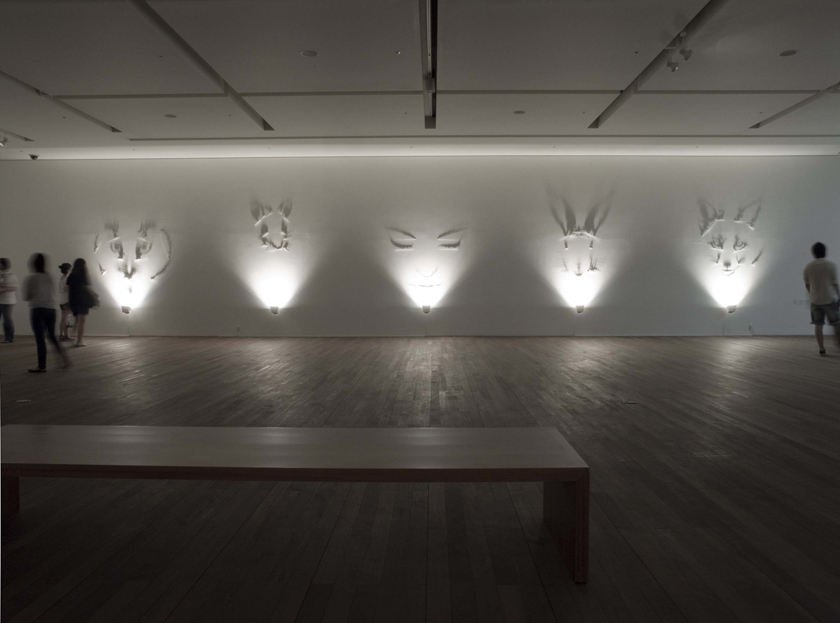
SPRINGS OF WHITE
curated by Vittoria Biasi – KimHaeng Ji
14-07 | 26-09 2010
Museum of Art of the Seoul National University
599 Gwanak-ro Gwanak-gu Seoul 151-742 Korea
Email. info@snumoa.org – Tel. 880-9404/5
CONTENTS OF THE EXHIBITION
This exhibition presents works of various media, such as installations of video and lightings, prints, drawing, photos, paintings of 16 Italian artists and 12 Korean artists with a common theme, “whiteness”. This will be a great opportunity to see the “whiteness” approached as “light” or “the origin of life” by Westerners and the modern interpretations of the oriental esthetics of this color originally considered as absence.
ITALIAN ARTIST
Carlo Bernardini – Pippa Bacca – Enrico Castellani – Paolo Di Capua – Casaluce/Geiger – Fabrizio Corneli – Franco Ionda – Emilio Isgrò – Oan Kyu – Rita Mele – Cristiana Palandri – Dino Pedriali – Francesca Poto – Paolo Radi – Angelo Savelli – Ufo (Urban Future Organisation)
KOREAN ARTIST
Choi, Man Lin – Choi, In Soo – Jeong, Kwang Ho – Chang, Yeon Soon – Jeong, Yong Kook – Kim, Seong Heui – Yang, Min Ha – Kim, In Kyum – Koo, Bohn Chang – Koh, San Keum – Kook, Dong Wan – Kwon, Dae Hun
ORGANIZATORS: Italian Cultural Institute, Museum of Art of the Seoul National University
ADDITIONAL EVENTS – Opening ceremony: July 14th, 5 pm – Docent conducted tours: about 7 tours per day
INFORMATIONS: Opening hours and closing days: Tue – Sun 10:00 – 18:00 (last entrance at 17:30) – Closed on Mondays and National holidays
..)(..
The President of Seoul National University
The Italian Ambassador in Korea
The Director of the Italian Institute of Culture in Seoul
The Director of Art Museum of Seoul National University
Springs of White
by Vittoria Biasi – KimHaeng Ji
July 14 at 5pm
14 July to 26 September 2010
599 Gwanak-ro Gwanak-gu Seoul 151-742 Korea
The project of Vittoria Biasi and Hyung-Min Chung, curator Vittoria Biasi and Haeng .Ji Kim, is based on the architectural concept commun to men, space and light laws, that science investigates.
It marks out a route of white and light poetics between an East of West and the East. The artists Carlo Bernardini, Enrico Castellani, Casaluce-Geiger, Fabrizio Corneli, Paolo Di Capua, Franco Ionda, Emilio Isgrò, Oan Kiu, Rita Mele, Cristiana Palandri, Dino Pedriali, Pippa Bacca, Francesca Poto, Paolo Radi, Angelo Savelli e Ufo (Urban Future Organisation) show the differences of Italian creativeness about an idea of white appeared during the sixties shown by the works of Enrico Castellani, Angelo Savelli, Emilio Isgrò. The Korean artists Man-Rin Choi, In-Soo Choi, Kwang –Ho Jeong, Yeon-Soon Chang, Yong-Kook Jeong, Seong-Heui Kim, Min-Ha Yang, In-Kium Kim, Bohn-Chang Koo, San-Keun Koh, Dong-wan Kook, Dae-Hun Kwon represent aesthetic routes about the idea of vacuum and white. The show is a leading meeting of codes, of light written and of marks in the wake of neo-avant-garde and tradition. The white recognition of Italian emergent languages fluctuates between the need of relationship, of contact with the life and the intuition or the perception of the same one. In the works of Casaluce/Geiger the geographical differences represented by the recovery of rituals coming from the South of world, the journey of Pippa Bacca and Silvia Moro in wedding dress; the placement of objects as fetishes of a cult in the works of Bon Chang Koo and Cristiana Palandri; the world of deprived stars sharing the human status for Franco Ionda; the search of soul belied in the form for Man Rin Choi ask questions of human history with no reply. The white bathed by the light is the origin of Soffio n. 2 made by Dino Pedriali named by historian Peter Weiermaier “il Caravaggio della fotografia” (the Caravaggio of photographers). The sculpture by In Kium Kim, the representation of the development of nature in Yong Kook Jung are dialogues with the aesthetic of vacuum and space. The white works of Paolo Di Capua, Rita Mele and Oan Kyu writings, the minimum stories of Francesca Poto and San Keum Koh, the Dong Wan Kook scannings, the deletions of Emilio Isgrò, the Min Ha Yang black-and-white solutions of calligraphy, the evocation of alien writings, anonymous in the recovered pages of Paolo Radi, are border crossings, that open towards the unlimited chance of sign. Carlo Bernardini, Fabrizio Corneli, Dae-Hun Kwon decline the extreme of light, of sign, they handle the echo, losing the border between autochthonous and avant-garde art. The project of UFO – Claudio Lucchesi (Italy), Andrew YAU (Hong Kong), Denis Balent (Slovakia), Jonas Lundberg (Sweden), and Steve Hardy (USA), Chairman Jung Mook Moon (Korea) that open the studios of Messina, and London after with Arjan Scheer (Netherland), Kia Larsdotter (Sweden), Peco Mulet Velasco (Spain), Theodoros Kanelloupolos (Greece), Dirk Anderson (Australia), Andrei Martin (Romania) and Jackie Yang (China). The show Primavere del Bianco is a monochrome window to look “beyond” in the meeting among the identities of times, languages and cultures.
Il Presidente Università Nazionale di Seoul
L’Ambasciatore d’Italia in Corea
Il Direttore dell’Istituto Italiano di Cultura in Seoul
Il Direttore Museo d’Arte Università Nazionale di Seoul
presentano
Primavere del Bianco
a cura di Vittoria Biasi – KimHaeng Ji
14 luglio | 26 settembre 2010
Museum of Art of the Seoul National University
599 Gwanak-ro Gwanak-gu Seoul 151-742 Korea
Il Presidente dell’Università Nazionale di Seoul, Jang – Moo Lee, l’Ambasciatore d’Italia a Seoul, S. E. Massimo Andrea Leggeri, il Direttore dell’Istituto italiano di cultura, Lucio Izzo, il Direttore del Museo d’Arte della Università Nazionale di Seoul, Hyung-Min Chung, presentano la mostra d’arte contemporanea Primavere del bianco nel prestigioso spazio del Museo d’Arte dell’Università Nazionale di Seoul.
Il progetto, a cura di Vittoria Biasi e Kim Haeng Ji, traccia un percorso delle poetiche del bianco e della luce tra un Oriente dell’Occidente e l’Oriente.
Le opere degli artisti Carlo Bernardini, Enrico Castellani, Casaluce-Geiger, Fabrizio Corneli, Paolo Di Capua, Franco Ionda, Emilio Isgrò, Oan Kyu, Rita Mele, Cristiana Palandri, Dino Pedriali, Pippa Bacca, Francesca Poto, Paolo Radi, Angelo Savelli e Ufo (Urban Future Organization) testimoniano le differenti direzioni della creatività italiana attorno ad un’idea di bianco emersa negli anni ’60, rappresentati in mostra dalle opere di Enrico Castellani, Angelo Savelli, Emilio Isgrò. Le opere degli artisti coreani Man-Rin Choi, In-Soo Choi, Kwang-Ho Jeong, Yeon-Soon Chang, Yong-Kook Jeong, Seong-Heui Kim, Min-Ha Yang, In-Kyum Kim, Bohn-Chang Koo, San-Keun Koh, Dong-Wan Kook, Dae-Hun Kwon delineano strade estetiche attorno all’idea di vuoto e di bianco. La mostra è un suggestivo incontro di codici, di scritture di luce, di segni sulla scia delle neo-avanguardie e della tradizione. La ricognizione bianca dei linguaggi emergenti italiani oscilla tra il desiderio di rapporto, di contatto con la realtà e l’ intuizione o la percezione della stessa. Le diversità geografiche rappresentate dal recupero di rituali dei sud del mondo, nell’opera di Casaluce/Geiger, il viaggio di Pippa Bacca e Silvia Moro vestite in abito da sposa; la collocazione di oggetti, come feticci di un culto nell’opera di Bon-Chang Koo e di Cristiana Palandri; il mondo delle stelle decapitate, partecipi della condizione umana, nell’opera di Franco Ionda; la ricerca dell’anima celata nella forma in Man-Rin Choi pongono domande di storia umana senza possibilità di risposta. Il bianco nella luce è l’origine dell’opera Soffio n. 2 di Dino Pedriali, definito il Caravaggio della fotografia dallo storico Peter Weiermaier. La scultura di In-Kyum Kim, la rappresentazione del ramo di Yong-Kook Jung sono dialoghi con l’estetica del vuoto e dello spazio. Le opere bianche di Paolo Di Capua, le scritture Rita Mele, di Oan Kyu, i racconti minimi di Francesca Poto e di San-Keum Koh, le scansioni Dong-Wan Kook, le cancellazioni di Emilio Isgrò, le soluzioni chiaroscurali delle calligrafie di Min-Ha Yang, l’evocazione di scritture estranee, anonime nelle pagine recuperate di Paolo Radi, sono attraversamenti del confine, apertura verso le infinite possibilità del segno. Carlo Bernardini, Fabrizio Corneli, Dae-Hun Kwon declinano l’extreme della luce, del segno, ne manipolano l’eco, facendo perdere il confine tra arte autoctona e avanguardia. Il progetto di Ufo -Claudio Lucchesi (Italia), Andrew Yau (Hong Kong), Denis Balent (Slovacchia), Jonas Lundberg (Svezia) e Steve Hardy (USA), JungMook Moon, direttore (Corea) che aprono gli studi di Messina, Londra e successivamente con Arjan Scheer (Olanda), Kia Larsdotter (Svezia), Peco Mulet Velasco (Spagna), Theodoros Kanelloupolos (Grecia), Dirk Anderson (Australia), Andrei Martin (Romania) e Jackie Yang (Cina)- è fondato sul principio del folding, che relaziona l’architettura a leggi dell’uomo, dello spazio, della luce e su cui indaga la scienza.
La mostra Primavere del Bianco è una finestra monocroma per uno sguardo ‘oltre’ nell’incontro tra le identità dei tempi, dei linguaggi, delle culture.
..)(..
Text by Vittoria Biasi
Tutti i fiori nascono bianchi serbando il seme dell’origine nella colorazione dell’inflorescenza, ma solo a pochi fiori è concesso proseguire il percorso emozionale ed elitario del bianco che rinvia ad una bellezza dispersa tra relazioni intense e sottili.
At birth, all flowers are white and they keep the trace of their origin in the colour of their inflorescence, but only a few of them are allowed to pursue the elect, emotional itinerary of the colour white, which refer to a beauty dispersed in intense and subtle relations.
Springs of White
At birth, all flowers are white and they keep the trace of their origin in the colour of their inflorescence, but only a few of them are allowed to pursue the elect, emotional itinerary of the colour white, which refer to a beauty dispersed in intense and subtle relations.
A historical sentiment draws man toward the idea of the Orient, as a hidden origin, symbolic form of a white and luminous space contained in the languages of all times. Cutting across every artistic movement, like an oracular writing, the idea of white travels in time and traverses the Twentieth century.
The work Quadrato bianco su bianco (White square on white) by the Russian artist Malevic, reference for the century’s artistic languages, is the first work in which reflections on the history of Western art are linked to Eastern thought, leading to the language of white. In the late 50’s the white works seem to trace an imaginary, monochromatic line that connects the West, the East and Japan, almost as a conclusion of the historical period devastated by the iniquity of the world war. It is along these lines that the desire for a new world grows, for which social, linguistic, cultural demands request respect of human values, of identity, which is reflected in an ideological authenticity. Since 1960 the historian Udo Kultermann has pointed out the phenomenon, achieving the first international acknowledgements of monochromatic art, with the participation of Italian artists, among whom Piero Manzoni, Enrico Castellani, Piero Dorazio, Lucio Fontana, Francesco Lo Savio, Salvatore Scarpitta Angelo Savelli. The expositions explore possible histories of white and introduce awareness of the encounter between different schools of thought and culture. The creative threads of those years evolve into enthralling poetics which, following a process of analysis and abstraction, lead to the pursuit of light of white and beyond. This path leads to a separation from reality, to a solitary concept in exclusive relation to one’s self.
After the 90’s, as the millennium came to a close, white thought moves away from a dimension of solipsistic privilege, turning toward the outside, as if discovering the facets of reality. White art and the artist discover themselves to be an open system and that inquiring into the idea of origin is not a solitary journey. Getting past the idea of a autarkic formation, the new thought becomes aware that the cognitive process results from the connection with the world of heterogeneous relationships, in the search of complimentary elements to realise one’s con-fusion.
The realization of an origin in the desire for the other, the recognition of the individual in the dialogue with the surroundings, requires sensorial experience of the external reality so as to regain possession of sensitivity, of matter, of drives, of differences, in shared incorporeal/real architectures, of resonant structures, of ritual writings in which white dances its evanescent immanence.
The exposition Primavere del bianco (Springs of White) originates from this journey of white art, from the surveys of emerging languages. This white expressed by the artists is that of life. Found in the folds of reality, it is that of nature: at birth all flowers are white and they keep the trace of their origin in the colour of their inflorescence.
The title of the exposition refers to the return of the seasons, when the new buds, born of a subterranean life, hidden, present, protracted in time, communicate a sensation that crosses languages, cultures and surrenders itself to new forms.
The white encounter between East and West in my personal expositive experience begins in 2000 with The White offerings’, exhibition on Buddhism realized together with Thai artists, who, for the occasion, built a temple of ‚Äòwhite thought’. In 2001, at the Museo Nazionale di Arte Orientale in Rome, at the exhibition Accordi di luce: Oriente d’Occidente: (Chords of light: Orient of the West), Italian and Thai artists met on a different, distant and at once common ground of an archaeological Orient of past times. The relationship continues in 2002 with the exposition Thai-Italian Art-Space at the National Gallery in Bangkok, where Italian artists, heirs of the monochromatic culture, take part together with the Thai artists, in creating a ritual encounter. The aesthetics of the western and oriental thought make a deep connection with the essence of the culture and its rituals through the exhibitions. In 2008 the first edition of Primavere del bianco was presented in New Delhi and Calcutta, creating an encounter with Indian poetic thought.
The exposition at the Bangkok Art and Culture Center represents the focus of a continuous dialogue during the past years. In Albis, a work realized with the students of the Accademia di Belle Arti in Florence, is our white offerings’, the white meeting point with Thai artists and students who interpreted our project with a sensitive participation in the white concept. In Albis originates as a group project whose only possibility of existence rests on contagion, on participation, on sharing the exciting, poetic ideas, extrapolated from the history of western tradition. The ritual of its realization, linked to the cultivation of wheat, kept in a dark place for forty days, suffering from the lack of light, repeats the myth of renewal common to all peoples willing to welcome and join in with the rituals of other cultures. The work does not present itself as an object. It testifies the participation in natural changes, it tends to express the essence of the journey experienced together as a group during a segment of shared time, exploring the interactions between different worlds. The installation, dedicated to Malevic, to Beyus and to white was presented in Todi, city of art, in 2009 as a project of the Accademia of Florence in Start Point, part of the display Maggio Fiorentino.
The concept of voyage of journey, a premise of research, in monochromatic thought in the emerging languages reveals aspects of listening and sharing. A unique and unrepeatable work, like Lucio Fontana’s ‚Äòcut’ in art history, is the white journey of Pippa Bacca, (Giuseppina Pasqualino di Marineo). Niece of Piero Manzoni, who connotes the history of art and that of white, Pippa Bacca sets out from Milan with Silvia Moro. Wearing wedding dresses, the two artists travel across Slovenia, Croatia, Bosnia, Serbia, Bulgaria, countries devastated by wars, and arrive as far as Turkey. Words, pictures, facts, specks of dust, personal experiences, memories of women, sewn on the white wedding dress, sublimated by thoughts of love, harmony, fill Pippa’s travel journal. This all ends in Istanbul, with the performance that comes before the violence, her death. Pippa Bacca, no longer a body but a work of art, revitalizes, continues — and makes continue– her white journey.
E-mails sent to the family, photographs, become part of the work as revision, trans-scription, writing, documentation of the spirit after each stop along the itinerary: they introduce a new concept of fragment. The performance, the design, remain in the elusiveness, the secret of art.
The concept of journey through the geographies of peoples and their traditions, in, assumes a technologically contaminated dimension in Matteo Basilé, in Casaluce-Geiger. Basilé enhances creative writing with associative processes, unexpected interventions, following a ‚Äòconnective memory’. The characters speak of a project of cross-breeding, a reflection of the associations a word can release in a network of thoughts/images beyond any inquisitive process. His creatures originate from an ethereal limbo, of which they retain a transparency of light. In the video of the installation, Per Grazia ricevuta (2004) Basilé assembles six thousand ex-votos forming a mount “a fragile vessel”, according to the vision of the Indian poet Tagore, in which expressions of sentiments, emotions of humankind, converge between past and future.
Casaluce-Geiger, asking questions about possible conceptions, definitions of white, opens a recognition/project via e-mail creating a white corporation. The thread of conjunction collects infinite monochromatic ramifications. The multiplicity of white and also of light, has roots in the traditions of Salento, which for the artist could incorporate every geographical as well as interior ‚ÄòSouth’, and also a non-place, by way of the apparent dialectic conflict, because the flux of life does not contemplate coherence.
“The body and the spirits of women are sorely tried by the tarantula’s poison in the exhausting and haunting dance. A ritual of birth, death and rebirth, destined to never complete itself, to be a pretext for questions about the meaning of life beyond the flesh, the blood and the technological blood”.
Bones, hair, bandages, white, stud the alphabet of the artist Cristiana Palandri. The elements, residual and persistent parts of the body, enter the creative process transformed by the private ritual of time, that leads the essential toward ‚Äòanother’ story, forsaking the sacrificial dimension. Bones recall immortality enveloped in matter, the highest expression of knowledge, the primary possibility to produce divine arms and musical instruments. This introduces the internal/external relationship the artist covers in the Bound, Oversight, Squeeze performances where man becomes the internal organ of his own architecture, which he casually arranges and re-arranges, becoming aware of what is destined to exist beyond his own life.
The concepts of body and image enter the history of white as the search for representation, continuing the artistic/philosophical thought that placed man at the centre of its study. In this sense the different languages of Dino Pedriali e Franco Ionda inquire into the exalting intention of man, Defined by Peter Weiermaier as “the Caravaggio of twentieth-century photography”, Dino Pedriali has dealt with the body, as nude, and in portraits of characters connoted or defined by specific traits, from faces of youth from the outskirts of Rome to those of prominent personalities of the cultural panorama. The artist begins his encounter with art in 1975 photographing Man Ray, Andy Warhol, Pier Paolo Pasolini, From that time he dedicates himself to a rigorous study of the nude, which he considers extremely difficult. According to Pedriali “The portrait is difficult because a man has two faces: the portrait to do and the portrait not to do”. With his work Soffio (2004) Pedriali posits the body as illuminated by rays and reflections which, emerging from dark recesses spill into the body “destroying the illusion of space and distance”. Pedriali experiences the image along two consequential directions. He experiences the reality of the body as an emanation of light, as a sacred matter, that connotes space, radiates with the present. From this derives the search for the figure as the trans-scription of the language of the soul, in direct relationship with reality, beyond any functional rapport and in absolute anarchy of sentiment. Pedriali becomes interested in the idea of a philosophical light that has gone beyond the passions stage: the body, as in the atomistic conception, is a radiating centre of diffused light in the spatial dimension, unaware of the temporal scansion of death and decay.
Franco Ionda begins his artistic adventure with drawing as the search for light. The dominant image in his first works is the figure of a knight who is born from his own shadow. In the late 80’s the artist chooses decapitated stars as battle companions of this figure, drawing inspiration from Majakovskij’s La nuvola in Pantaloni. Hence appears a language of a more linear and marked movement, stars and nails become the connotative key feature of his art, The stars, in the sentiment of the artist, quit the indifferent ethereal dimension and land on earth at man’s side to participate in his destiny of waiting. They have an irregular form with acute and obtuse angles, perhaps from the star soldier of Etruscan culture. The concept of heroism reaches the threshold of myth. The words are the expression of rebellion, the objectification of Majakovskij’s verses,[6] “look:/ they decapitated the stars again/ and they covered the sky with blood like a slaughterhouse”. Ionda’s poetic experience suggests to him the artistic narration formalized in decapitated stars. They hold stories of massacres and failed revolutions, ” I gathered the fallen decapitated stars and I made them the purpose of my work. I will disseminate them all over the world, I’ll do it, it’s a fixation, it will be a great journey, they will be scattered everywhere. I illuminated them with artificial white light, they symbolize every sacrifice of human history and at the same time a plea to end these sacrifices”. In the video Smarriti nello spazio (2003) (Lost in space) the spectator is caught up in the shower, in the shower of silver bodies from which he wants to escape so as not to be nullified on the threshold of existence. The decapitated stars[7] , nails, writing are the signs with which Franco Ionda exalts the emotion of reality.
Investigation into the monochrome have different possible landing points between white and its light. Rita Mele trans-scribes in white a social and literary reality of shattered dreams, of failed revolutions, The artist moves across signs, minimal stories, which like tips of shattered icebergs drift in the infinity of the history of mankind. The painterly surface is highlighted with intense material passages, passages that keep a sense of drafting, of crossing, A poetic landscape of snow, a whitewashed wall expose, highlight surface movements like white writing referring to a secret becoming a nothingness that is but a gift, Every narration losses the colour of a drive, it becomes acceptance, moment, transit, chapter in the archive of existence. Viaggio da Asmara a Massaua, Silenzio (Journey from Asmara to Massaua, Silence) are an expression of this sensory experience of reality, in a suspended, broad look. The works Raccontami una storia (Tell me a story) refer the narration, page after page, toward a place in infinity where the meeting of feeling is possible.
The work of Paolo Radi turns to the inside of materials used, which he studies in order to reach their light, their spirit, not unlike Ettore Spalletti. With a patient and ritual procedure of smoothing, Paolo Radi polishes the surface revealing a suspended dimension between the corporal and the incorporeal, between the visible and the invisible, between evocation and disappearance. In painterly works as well as in sculptures, the artist is guided by a poetical sense that gives evidence to the aura of the work. The expressive coherence derives from the perception of minimal movements in space, vibrations that dialogue with the body of the work. The smoothed materials such as wood for the haut-reliefs, look like exposed skin, vibrant with internal sensations, alert to capture surrounding sounds. The form of the works presented in the Primavere del Bianco exposition are part of the page, worn out by time, by the adventure of its existence, while the writing evokes the original potentiality, the receptiveness to light, to the extension of feeling. The staged image gathers fragments, memories of art history, used by the artist to compose a stylistic metaphor of white dramaturgy.
The light of white is the extreme reality of white. The artists Fabrizio Corneli and Carlo Bernardini set the source of light in space guiding the itinerary with rules of broad expressive coherence.
Fabrizio Corneli uses the light of shadows to trace his characters. Using a white screen, the artist projects the images studying the quantum mechanics of light. In darkness an itinerary of behaviours unfold, specific to the spirit, to monochromatic art in reaching white. The shadows, the darkness in western history are associated with fear, negativity, evil spirits. In the metaphysical painting of De Chirico, the shadows of the colonnades form the setting of the major part of his works from 1910 to 1919. Fabrizio Corneli intervenes in the rapport shadow/light with a disturbing[8] action, guiding the relation along soft itineraries, that trace soft lines, part of a whole that an attentive look recomposes. The image of the Sognatrice (Dreaming woman) dominate the scene, a long look observes the relationship between existence based on the struggle between the prey and the predator that follows the same pattern as the original conflict between shadow and light. The concept of contrast as a law of life is a possible subtext, The artist presents his creatures as characters without roles, left to the mercy of the natural course of events.
Carlo Bernardini, in the wake of the perceptual poetics of the 50’s and 60’s, reaches a language of light hinted at in the period of his pictorial monochrome work. These focused on the investigation of light and its sculptural dimension within whiteness. The optical fibre sculptures redesign space revealing the multitude of possibilities present. The works Catalizzatore di luce (Catalyst of light) reproduce one limited to the controlled dimension of the square. A ray of light introducing virtual reflections. These are activated by the spectator’s glance. The expansion of the work depends on the mobility of he who observes and wants to discover the directions of the ray of light and the chromatic nuances of the rainbow. The darkness and the fibre create a minimal theatre in which light develops the ascensional narration revealing its active, poetic dimension.
The artists involved with white thought want to reach the essence of the matter, participate in depth in its movements, translate them into objective languages following an itinerary embarked upon by artists such as Angelo Savelli, Enrico Castellani.
In the 60’s Enrico Castellani imagines a surface as a structure orchestrated to capture light. The construction of extroversion highlight connections with mathematics in an architecture of pure light that insinuates itself from shadow to shadow: secret quantity, transcription of a text to be read as a music score. Castellani’s whites bring to mind a passage by Roland Barthes ” [‚Ķ] in the effort to liberate literary language, here is another solution: create a white writing freed from all servitude”.[9]
The impossibility to capture light and the desire to avert it are at the origin of Castellani’s work. The surface is a snare or a trap to catch light magnifying its rhythmic deluge, real moment in the sense of the infinite.
The extroversions in Castellani’s canvases call to mind signs of primary motion and represent the discontinuity that holds the secret of appearing, the concern of reaching the origins of the visible.[10]
Angelo Savelli narrates space as the breath of time stirred by the wind. The artist, born in the south of Italy, transfers to his poetics the profound connection he has with Mediterranean light. His first pictorial work is a representation of agitated signs that do not lend themselves to emotionalism or sentimentalism. The artist elaborates a landscape that goes from signs and materials of poor objects from everyday life to the poetic white trans-scription of ritual gestural expressiveness. This results in a poetic composition of the elements depending on a geometry of sentiment dear to Malevic.
White, like a cloud in the sky, will always be the profound and evasive thought of art and its relations.
Vittoria Biasi
translated by Patricia Pepe
1. Vladimir Majakovskij, La nuvola in pantaloni, Editori Riuniti, Roma, 1980, p. 324.↑
2. Franco Ionda trae la sua cifra linguistica dal verso del poeta russo Vladimir Majakovskij “Hanno di nuovo decapitatole stelle e insanguinato il cielo come un mattatoio”. Cfr. Franco Ionda, [cura] Ammon Barzel, Federico Motta Editore, 2001↑
3. Cfr. Victor I. Stoichita, Breve storia dell’ombra, Il Saggiatore, Milano, 2000, pag. 129-131↑
4. Roland Barthes, in Bruno Zevi, Il manifesto di Modena, Canal & Stamperia, Venezia, 1998, p. 15↑
5. Vittoria Biasi, Le architetture del bianco, Gangemi editore, Roma 2009, pp. 89-90↑
6. Vladimir Majakovskij, La nuvola in pantaloni, Editori Riuniti, Roma 1980, p,324↑
7. Franco Ionda takes his linguistic from the verse of the poet Vladimir Majakovskij, ” they decapitated the stars again and covered the skies in blood like a slaughterhouse”, Cfr Franco Ionda, (cura) Ammon Barzel, Federico Motta Editore 2001.↑
8. Cfr Victor I. Stoichita, Breve storia dell’ombra, Il Saggiatore, Milano, 2000, pp. 129-131.↑
9. Roland Barthes, in Bruno Zevi, Il Manifesto di Modena, Canal & Stamperia, Venezia, 1998, p. 15.↑
10. Vittoria Blasi, Le architetture del bianco, Gangemi editore, Roma 2009, pp.89-90.↑

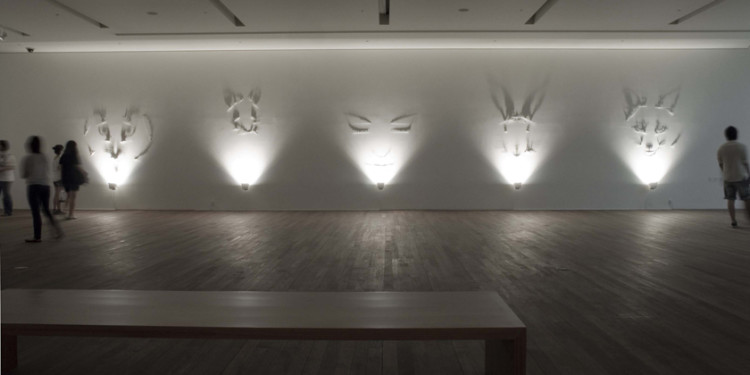
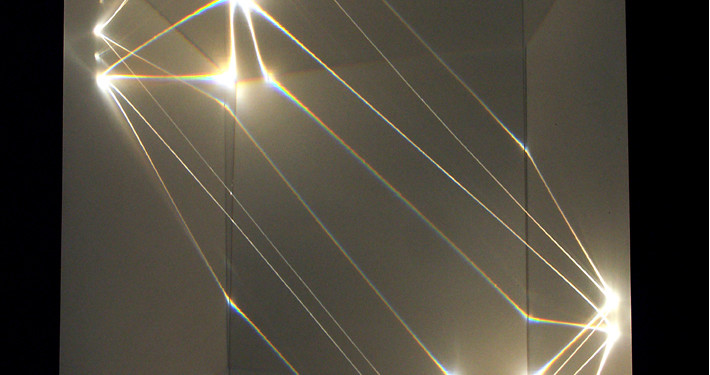
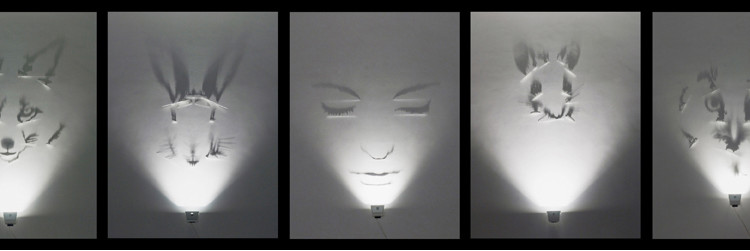
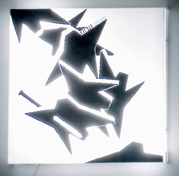
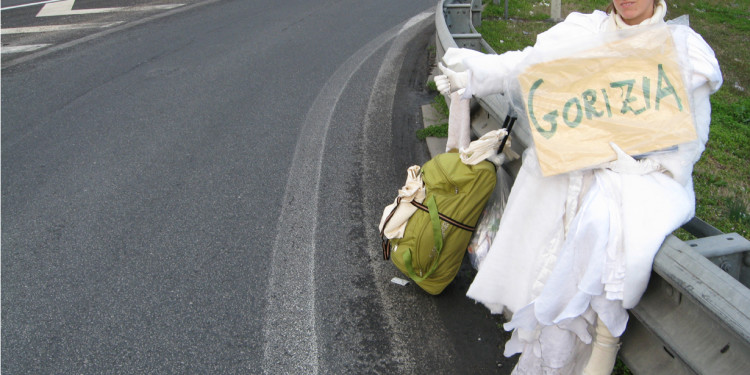
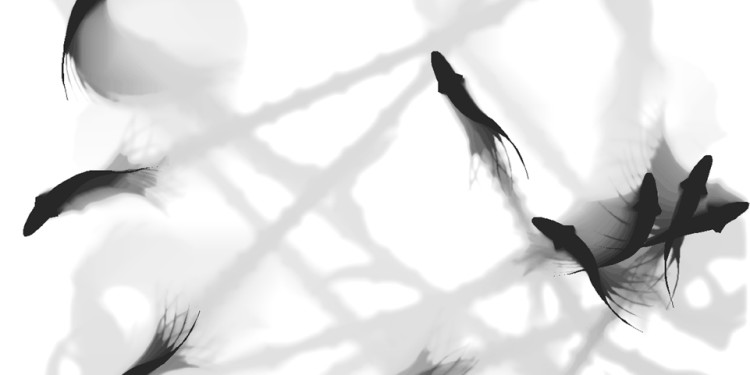
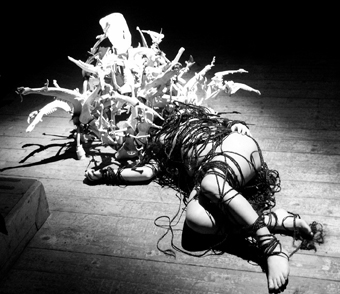
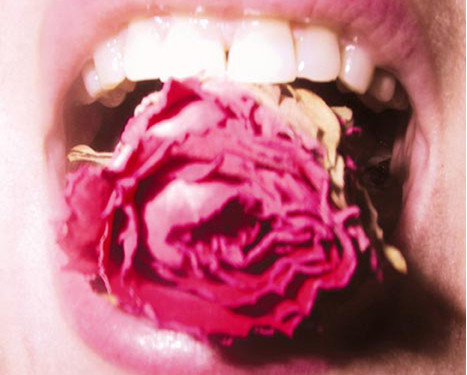
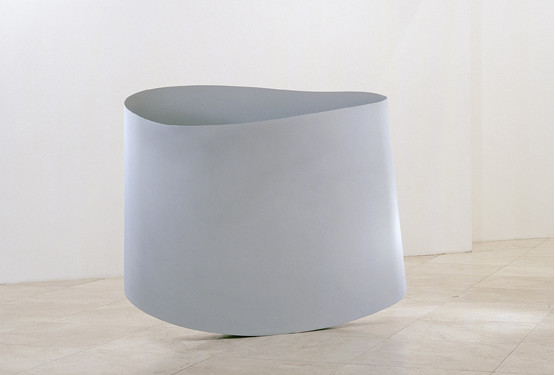
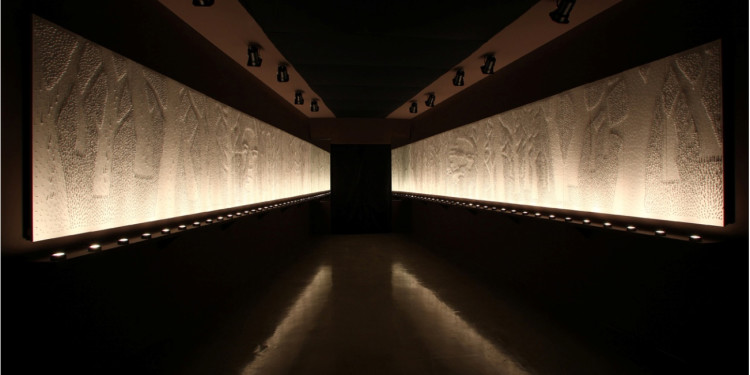
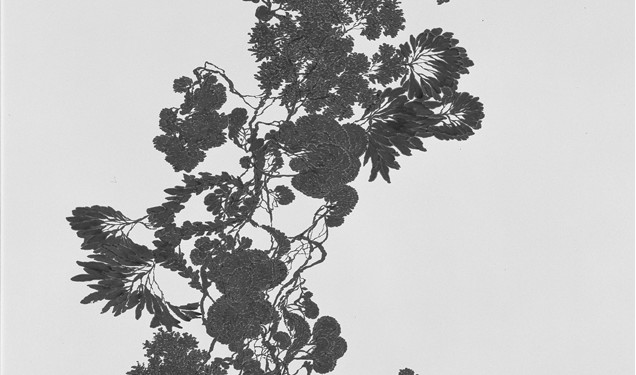

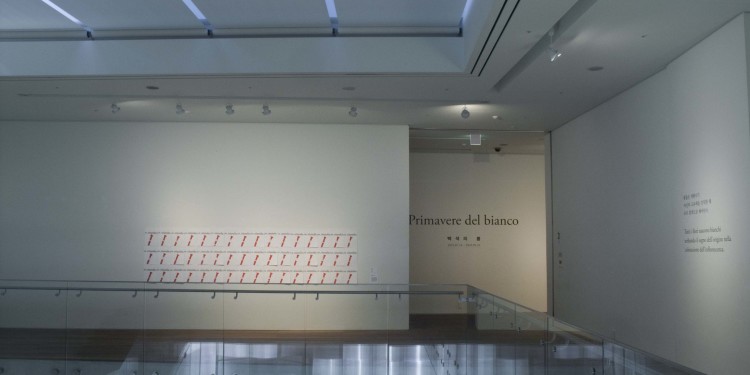
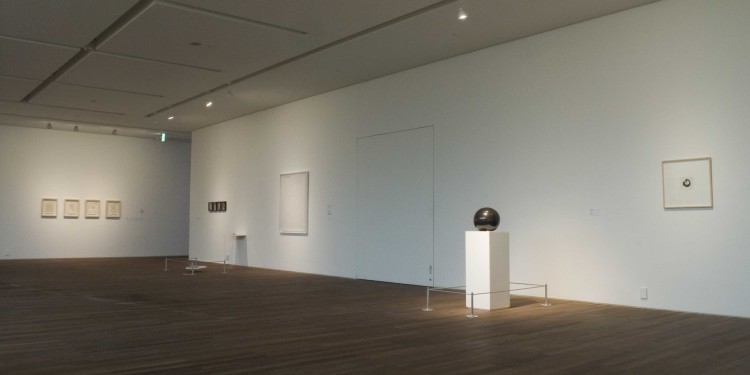
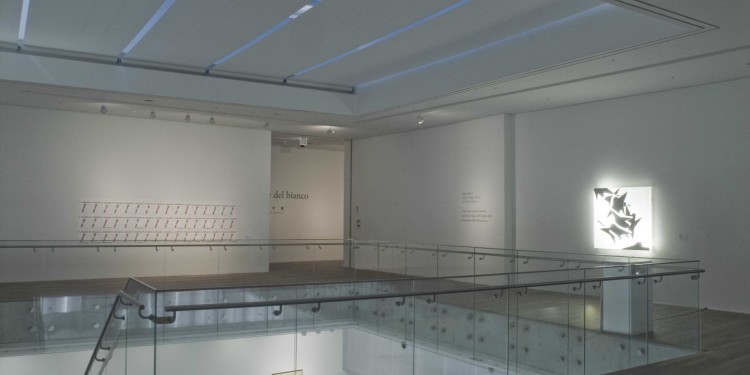

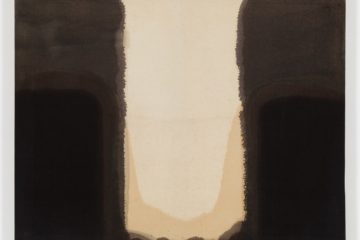
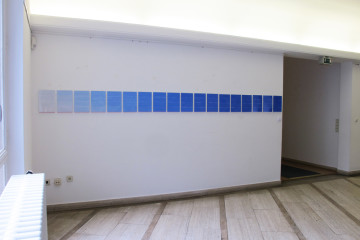
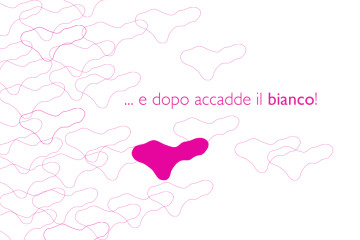

No Comment